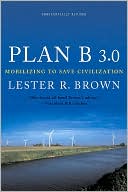Managing the Environment, Managing Ourselves: A History of American Environmental Policy
In this book Richard N. L. Andrews looks at American environmental policy over the past four hundred years, shows how it affects environmental issues and public policy decisions today, and poses the central policy challenges for the future. This second edition brings the book up to date through President George W. Bush's first term and presents the current state of American environmental politics and policy.
Search in google:
In this book Richard N. L. Andrews looks at American environmental policy over the past four hundred years, shows how it affects environmental issues and public policy decisions today, and poses the central policy challenges for the future. This second edition brings the book up to date through President George W. Bush's first term and presents the current state of American environmental politics and policy.
\ \ Chapter One\ \ \ Environment and Governance\ \ \ A belief in spontaneous progress must make us blind to the role of government in economic life.\ — Karl Polanyi, The Great Transformation\ \ \ Every society develops particular patterns of relationships between its members and their natural environment. At a minimum, these patterns include acquiring the material necessities of life (food, water, heat, shelter), disposing of material and energy wastes, and protecting people from environmental hazards (fires, floods, predators, diseases). Beyond the minimum, they include attempts to satisfy additional human wants and aspirations: larger populations, material comfort and affluence, urban amenities, political and economic power, a sense of beauty or security, and monuments to religious values or human vanity.\ These patterns differ greatly from one society to another. They differ in part due to the environmental conditions themselves—climate and weather patterns, hills and valleys and plains, minerals, vegetation and wildlife, rivers, estuaries and oceans—and the opportunities and constraints and hazards that these conditions present. They differ also with the characteristics of the society. Large and small populations make different demands on their environments. So do populations that have more or less powerful technologies for resource extraction and transportation, more or less elaborate systems for economic exchange, more dense or dispersed settlement patterns, and greater or fewer material aspirations. Different societies also see and value their environments indifferent ways: what is desired in one culture may be unrecognized, distasteful, or even feared in another.\ The effects of these patterns may be more or less sustainable over time, both for the society itself and for its environmental conditions. They may be also more or less equitable in their impacts, more or less conscious and deliberate, and more or less influenced by the actions of formal governments.\ \ \ Environmental Issues as Governance Issues\ Human uses of the environment are matters of governance, not merely of individual choice or economic markets.\ Some may disagree with this assertion. Strict libertarians might argue, for instance, that uses of the environment should be decided by autonomous individuals acting on their own preferences and values, without compulsion by governments. Free-market economists might argue that they should be decided by the sum of individual preferences expressed in market choices, and that government should intervene only to correct "market failures." Still others might argue that the only role of government should be to protect and enforce private property rights, leaving environmental choices to those who thus own the environment.\ For at least seven reasons, however, government involvement in environmental issues is both necessary and inevitable.\ First, governments assign and enforce property rights, determining who has what rights to use or transform the environment and what duties to protect it. When someone buys an acre of land, does she own the minerals underneath it and the water and wildlife that cross it as well, or may these belong to someone else or to the public? Does a commercial fisherman have the right to sell as many fish as he can catch, destroying an entire fishery and simply moving on to another, or is that right limited by a legitimate public interest in maintaining the fishery's survival? Does an upstream industry or city have the right to use a river for waste disposal, or does a downstream homeowner or community have the right to water free of contaminants?\ Governments do not merely intervene in markets. They establish the basic operating conditions for them, affirming and enforcing principles regarding who actually holds the rights to produce or sell environmental assets—or to exclude others from them— in the first place, and who is liable for the costs of environmental damage. Even libertarians need governments to enforce their rights against environmental damage caused by their neighbors.\ Second, governments define and enforce the rules of markets themselves. Governments enforce contracts and other rules of market honesty, for instance, so that both buyers and sellers can protect themselves against cheaters. Some of these rules involve environmental conditions: adulterated foods, contaminated or toxic products, businesses with unacknowledged environmental liabilities, false advertising claims for "green" products, and other misrepresentations. For that matter, modern corporations would not even exist without government statutes that allow people to pool capital assets in such organizations, to limit their personal liability for the corporations' actions, and to operate such corporations as "legal persons" with essentially the same legal rights as individuals. Markets do not operate without government enforcement of the rules of fair transactions, and environmental conditions are often elements of such fairness.\ Third, governments protect public health and safety. Both infectious diseases and toxic agents are spread through environmental exposures against which people cannot fully protect themselves by individual actions or market choices: through air, water, and food contamination, insect vectors, and unwitting contact with infected individuals, for instance. Historically such hazards have killed and sickened vast numbers of people. Environmental hazards are also increased by the cumulative effects of individually logical choices: disposing of wastes as cheaply as possible, building more and more homes with septic systems around lakes, paving and building along rivers and thus increasing downstream floods. Governments are needed to enforce reasonable restrictions on individual behavior patterns that create hazards to public health and safety.\ Fourth, governments protect environmental assets from "tragedies of the commons." Many valuable environmental resources are "open access" or "common pool" resources that can easily be captured and sold by competing businesses. Examples include ocean fisheries and large underground oil pools. Each commercial fisherman has an incentive to catch and sell as many fish as possible, and each oil company to pump as rapidly as possible, since otherwise the resource will be captured and sold by their competitors. National parks and public highways experience similar problems: the cumulative effects of individual choices can lead to overcrowding or even destruction of the common resource. Garrett Hardin described such problems as tragedies of the commons (1968). Such patterns of incentives and behavior, he argued, must be restrained by some governance mechanism—"mutual coercion, mutually agreed upon"—or the common resource will be destroyed by the cumulative results of individually rational choices.\ Fifth, governments provide collective goods that markets do not. Many valuable environmental conditions are collective goods. Like national defense, clean air and public parklands benefit whole communities rather than just individual purchasers, and arable soils and sustainable fisheries benefit generations who are not yet present to make market choices. Markets undervalue or even fail to provide such goods: first, because it is impossible to organize payment by all the people who benefit from them, and second, because those who don't pay cannot be excluded from enjoying them as well. Acting as self-interested individuals, both businesses and consumers are tempted to "free-ride": to pay as little as possible for their share of collective goods from which everyone benefits.\ Free-riding aside, individuals and markets also depend on governments to pool enough resources to finance projects that may be widely beneficial but require large investments for benefits that accrue over long periods of time. Examples include large multipurpose water resource development projects, building of transportation infrastructure, and space exploration. Not all such projects have been well justified in the past, but many clearly have been.\ More generally, governments provide environmental services that people prefer to have provided collectively, acting as voting citizens of a community, state, or nation rather than as individual consumers. Examples include public water supplies and waste management services, community amenities, and parks and recreation areas. Governments also have the unique power to redistribute access to environmental amenities and economic resources based on votes rather than purchases. In societies more complex than small face-to-face communities, only governments can redistribute resources so as to provide at least minimal access to decent living conditions regardless of wealth. Also, only governments can moderate the inequities that markets tend to produce, both in general economic opportunity and in access to environmental resources and amenities. Governments do not always produce these results—often they are influenced by powerful economic interests to redistribute from the poor to the rich—but only governments can accomplish redistribution.\ Finally, environmental issues are governance issues because governments' actions have environmental impacts themselves. Governments tax some uses and subsidize others, and they invest public funds in projects to transform the landscape for resource extraction, human settlements, transportation, food and energy production, and other uses. They preserve and manage some landscapes directly, regulate and restrict the use of others, and support research and professional expertise in areas of environmental knowledge that markets alone might not. Government actions both cause and correct environmental problems: government regulations and subsidies have been vital and effective tools for cleaning up pollution, for instance, but government incentives for Cold War military and industrial production also caused widespread contamination in the first place. Dealing with environmental issues therefore means dealing with the environmental effects of government actions themselves, not simply those of individuals and businesses.\ In environmental policy issues, therefore, questions about the proper management of the environment are fundamentally intertwined with questions about the proper ends and means of governments themselves.\ \ \ Environmental Policy\ Environmental protection policy includes three elements of environmental policy that are explicitly intended to protect public health and ecological processes from adverse effects of human activities. The first element is pollution control, including prevention, safe management, and cleanup of waste discharges, accidental spills, and deliberate environmental dispersion of toxic materials such as pesticides. The second is sustainable natural resource management, including maintenance of naturally renewable resources (groundwater, forests, fish and wildlife, arable soils), regulation of rates of extraction and use of other resources (water, fuels, strategic minerals), and management of conflicting uses of landscapes for commodity production and recreation. The third is preservation of natural and cultural heritage, including areas of special beauty, historical and cultural significance, ecological functions, and landscape character.\ Environmental policy as a whole, however, includes all government actions that alter natural environmental conditions and processes, for whatever purpose and under whatever label. Policies promoting transformation of the environment for mineral extraction, for agriculture or forest or outdoor recreation, for urban or industrial development, or for transportation infrastructure are in their effects just as much elements of environmental policy as are pollution control regulations or habitat protection programs—whether or not they are called by that name. So are military operations, international trade agreements, and other policies with environmental impacts.\ This broad definition of environmental policy has important practical implications. First, the "real" environmental policy of a government is not necessarily what its officials say their policy is, nor what the statutes and regulations say, but the cumulative effect of what government actions actually do to the natural environment. Many official statements of environmental policy, and even statutory mandates, are undercut by conflicting mandates or underfunded budgets, and others are ineffective in achieving their stated purposes.\ Second, many of the most powerful instruments of environmental policy are lodged not in environmental protection agencies but in agencies that transform environmental conditions for other purposes. The policies of the Agriculture, Energy, and Transportation Departments, for instance, may affect the environment at least as much as those of the Environmental Protection Agency (EPA), and their budgets are far larger. Some of the most effective policy strategies for reducing pollution, therefore, might involve not adding new EPA regulatory programs, but changing or eliminating environmentally damaging programs administered by other departments. More generally, the best way to achieve an environmental policy goal, such as reducing pollution or preserving ecosystems or landscapes, might often be to improve coordination of conflicting policies across multiple sectors, rather than merely to add a single new law involving one agency.\ \ \ Environmental Problems as Public Policy Issues\ Environmental problems share with other public policy issues a set of questions about what governments should and should not do, and how such decisions should be made. These questions are just as much a part of the debates about environmental problems as are the questions of environmental science, technology, and economics that often dominate such debates. They include the following:\ Individual versus collective purposes. Which purposes should be pursued through collective decisions, and which should be left to individual choices? Some functions are intrinsically governmental and cannot be accomplished in any meaningful way by individuals or economic markets alone. Protecting public health has long been recognized as a government function, and sustaining the "commons" of environmental conditions necessary for the society's continuation and economic welfare is also such a purpose. Other functions, such as transportation, water and energy supply, waste management infrastructure, and other services, can be provided either collectively or individually.\ Tradeoffs among public purposes. How should conflicting public values for uses of the environment be balanced? Even among legitimate public purposes, conflicts and tradeoffs are inevitable: among competing uses of environmental resources themselves, among competing allocations of limited budgets and staff expertise, and among different beneficiaries and victims. Which should be considered most important, by what criteria, and who should decide?\ Proof versus prudence. How much evidence should be required to justify government actions? Government policies are collective actions, in which the good of society is asserted to override the rights or preferences of individuals. They must therefore be justifiable rather than arbitrary or capricious. In the United States in particular, this principle has led to elaborate requirements for scientific and economic justification of policy proposals. Uncertainty and conflicting judgments remain inescapable, however, so prudence must always substitute to some extent for proof.\ As a result, policy decisions are not only decisions about substantive environmental problems but also about how much proof is necessary to justify a government action to correct them. This issue is important in itself, especially when costly or intrusive remedies are proposed for problems whose solutions are highly uncertain. It is also used by some advocates, however, as a tactic to slow or derail prudent policy proposals that they oppose for self-interested reasons: "paralysis by analysis."\ Central versus local governance. At what level of governance—local, regional, state, federal, international—should environmental policy decisions be made? The principle of "subsidiarity" holds that policy decisions should be made at the lowest possible level: local decision-making provides the best venue for developing solutions tailored to specific conditions and communities. It is most accountable to those most directly affected, and most appropriate for maintaining the diversity of human cultures and communities.\ By the same token, local governments also have more limited revenues and resources than those with broader jurisdictions, leaving poor communities unable to benefit from a broader base of economic support. Local decisions are also most likely to run counter to more general public values, whether pertaining to trade, environmental protection, or human rights. Granting autonomy to local governments also creates the risk that they will displace adverse effects onto other jurisdictions, and may pit local or even national governments against one another in using tax breaks, lower wages, and weaker environmental protection policies to attract or retain businesses.\ More centralized governance, conversely, provides greater opportunities for setting general standards of acceptable behavior and competition, and can amass greater revenues with which to realize public purposes. Its risks, however, include greater bureaucratization, lessened accountability, dominance by powerful centralized interests, and standardization at the expense of local diversity. Policies must be designed to use the most appropriate combination of tools and levels of government to solve each problem.\ Organization of government institutions. What sorts of government agencies, at any level, should be responsible for environmental protection? Should they be specialized independent agencies (for environmental regulation, for instance), or multipurpose departments encompassing both regulation and natural resource management? How can such agencies be coordinated with other agencies whose actions affect environmental conditions? There is no simple way of organizing all government purposes under one super-agency, but separate agencies have inherent tendencies to pursue their own missions at the expense of others.\ Even individual units such as the EPA must be broken down into subunits that tend to focus narrowly on their own missions. Organizing by problem types such as air or water pollution, toxic chemicals, and waste management will lead to different results than organizing by problem sources such as industry, agriculture, and households or by administrative functions such as standard-setting, enforcement, and research. Conflicting perspectives and priorities must constantly be resolved.\ Collective choice procedures. Who is to decide, and by what process, what environmental policies and priorities should be? Representative legislatures or appointed administrators? Experts or "the people"? Experts may be wise protectors of the society's future, or self-interested and arrogant elites. Members of Congress may be statesmen seeking the long-term good of the society, decent but parochial representatives of their constituents' wants, or merely self-interested incumbents selling themselves to interest groups to finance their own reelections. Ordinary people may be ideal citizens seeking the good of their society, or they may be just as self-serving or short-sighted as anyone else.\ Each procedure for collective decision-making has strengths and weaknesses, both in principle and as a mechanism for determining what governments should do.\ Policy tools. What kinds of government actions are the best tools for achieving public policy goals? Regulations with civil or criminal penalties? Public expenditures, subsidies, and investments? Taxes and other economic incentives? Information disclosure requirements? Providing public services, or contracting for them? Some policy tools may be far more effective than others, either in general or for particular purposes. All have impacts on other goals as well, such as fairness, economic efficiency, and equitable distribution of the benefits and costs of the policy to particular communities. Policy choices must therefore be based on careful evaluation of their full consequences, and on experimentation and correction over time.\ Intrinsic hazards of governance processes ("government failures"). Finally, governmental actions always involve complications intrinsic to collective decision-making (Wolf 1979). "Free-riding" describes each participant's temptation to try to avoid paying a fair share of the cost of collective services. "Rent-seeking" reflects the equally human tendency to seek excessive compensation for one's own property or services, or even one's vote. "Porkbarreling" describes the tendency of elected representatives to collude in allocating general public revenues to benefit their own constituencies.\ Other complications stem from the transaction costs of reaching agreements. Collective decision-making is costly and time consuming. Collective decisions require vote-trading across issues important to individual participants but far removed from the merits of the matter at hand, and compromises—"splitting the differences"—that may distort or pervert the decision's outcome. Different voting rules have different consequences: the "tyranny of the majority" can marginalize minority viewpoints, but the tyranny of organized minorities can frustrate majority values. It is far easier to organize small but identifiable groups with personal economic interests to influence policy decisions than to mobilize larger and less identifiable constituencies that share a more general public interest in the outcome (Olson 1965). To many people, consensus seems intuitively the most desirable form of political decision-making. In practice, however, it rewards the most extreme form of minority tyranny by allowing holdouts to demand extra individual benefits ("rent-seeking") as the price of their approval.\ Governments also tend to externalize the social and environmental costs of their decisions, just as businesses and individuals do. Government decisions are routinely designed to promote the short-term self-interests of public officials and powerful organized interests by providing concentrated and visible benefits while making costs and harms as widely dispersed and invisible as possible. The result is often that social and environmental impacts are displaced onto other agencies, onto other communities or countries, onto other levels of government, onto less-organized constituencies, or onto later legislatures and administrations and future generations. Examples include locating incinerators on downwind borders, imposing unfunded federal mandates on state and local governments, and subsidizing the extraction and use of natural resources at rates faster than can be sustained for future users.\ Such jurisdictional externalities are in principle no different from the externalities sometimes produced by economic behavior, except that they represent government failure rather than market failure. Such problems arise whenever a government's jurisdiction and process do not include representation of all affected constituencies and responsibility for the full range of causes, consequences, and potential solutions. They are particularly common in environmental policy issues, for reasons discussed below.\ In environmental policy no less than in other public policy debates, therefore, the fundamental issues include questions not only about technical and economic matters but also about the role of government, the cost and risks of its actions, and measures to minimize and correct harmful effects.\ \ \ Special Characteristics of Environmental Issues\ Environmental issues, however, also have characteristics that differentiate them from other policy issues. For example:\ Environmental values, preferences, and power relationships. Environmental issues involve particular places with distinctive natural features and histories. People identify with such places and develop strong opinions about how they should look and be used: whether they should be kept as they are, used for established economic purposes, or altered to achieve some new vision. Moreover, the uses of particular places are interdependent. Unlike budget allocations, entitlement programs, and many other policy issues in which each constituency can lobby for a share of the outcome, each participant's use of the environment affects those of the other participants: hunters and hikers and loggers, fisherman and farmers and users of municipal wastewater treatment plants. Proposed changes, therefore, are often simultaneously good to some groups and bad to others.\ Creating environmental policy, therefore, often involves negotiating conflicts among mutually exclusive preferences for the use of indivisible resources. Such conflicts are far less amenable to political compromise or compensation than other policy issues. Examples include conflicts over proposals for construction of mines, landfills, and other major facilities, logging of old-growth forests, damming of free-flowing streams, and development of beaches and lakeshores.\ The physical and biological realities of environmental conditions also create one-sided relationships of economic and political power. Rights to use natural resources, such as forests and minerals, confer windfall economic benefits but also create resource-dependent interests and constituencies. Upwind or upstream users can always impose externalities on their downwind or downstream neighbors, but the latter have no inherent countervailing power to negotiate fair outcomes with the former. Hunters and fishermen benefit from capturing migratory animal species, but the reproduction and growth of those species depend on restraining people who use the ecosystems where the animals spend earlier stages of their life cycles.\ All these conditions shape environmental policy debates in ways that make them distinct from political controversies based only on ideology, political party, social class, or other factors.\ Public attitudes toward environmental risks. Environmental risks evoke strong public attitudes and preferences. Many people demand government action to prevent environmental risks that are far more remote than risks they voluntarily incur in their daily lives. Examples include risks of exposure to trace residues of man-made chemicals in comparison to such risks as driving a car, crossing a street, smoking, or even eating foods whose natural properties pose greater health risks than do their man-made additives (high fat, cholesterol, or natural toxins, for instance). This pattern appears to reflect greater aversion to risks that are perceived as more uncontrollable and more dreadful in their consequences than others. It may also reflect other values, such as a willingness to impose greater costs of risk prevention on other parties than on themselves (on "big business" or "big government," for instance). Whatever the reasons, fear of environmental risks represents a powerful and distinct force that is different from those motivating other policy advocates.\ Tragedies of the commons. Many environmental conditions are by their nature open-access resources: available to everyone, and therefore difficult to protect from the cumulative effects of overuse. Examples include the atmosphere, water bodies (lakes, rivers, estuaries, and seas), underground aquifers and oil deposits, fisheries and unmanaged public forests and grazing lands. Garrett Hardin's classic article "The Tragedy of the Commons" described as a model of such problems the case of self-interested sheepherders, each of whom adds animals to a common pasture until the cumulative effects of their individual decisions destroy it (Hardin 1968). Some open-access resources can be privatized, to be managed (though not necessarily protected) by a single owner. Some can be converted to government property or "common property" resources, in which either government or an association of the users manages and protects it. But others are more difficult to protect. The users may be too numerous, too diverse, or too separated in space or time to create a viable regime, or the values to be protected may be too divorced from the interests of those causing the damage: as, for instance, when fisheries are destroyed not by other fishermen but by land developers or farmers.\ Tragedies of the commons are not unique to environmental policy issues. Other examples include overpopulation (the cumulative effects of human childbirth decisions) and the politics of some other collective goods (for instance, the cumulative effects of individual legislators seeking "pork barrel" budget allocations). Environmental policy issues pose such dilemmas constantly, however, pitting long-term common interests against more immediate individual interests.\ Scientific and technical premises. Environmental policy decisions are often framed by scientific and technical claims, including assertions about what is known and what options are technically possible, as well as assumptions, predictions, and uncertainties. This raises several problematic issues. First, it creates barriers to meaningful participation by people who do not understand the scientific and technical claims being made. Second, it makes the burden of proof a key issue in its own right: should governments be required to show strong scientific proof before acting to correct environmental problems, or should they act based on reasonable judgments about the risks or opportunities at stake even when significant uncertainties remain? Third, it raises questions about how much deference should be given to scientists in the policy process. Each discipline addresses only pieces of any issue, and individual scientists reach different conclusions based on the different bodies of evidence and criteria they use. Scientists are often overconfident of their judgments, and sometimes as self-interested as other policy advocates. Many scientific claims in policy debates—though by no means all—may therefore be just as political among conflicting groups of scientists as the policy decisions themselves are among conflicting public constituencies.\ Irreversible damage to public interests. Finally, some environmental issues involve consequences far broader than the self-interests of particular advocates, some of which are potentially irreversible on any meaningful time scale. Examples include species extinctions, the exhaustion of nonrenewable resources and arable soils, and particularly the destruction of whole ecological systems that support living communities, such as forests, fisheries, wetlands, and estuaries. The potential for irreversible damage to irreplaceable natural conditions and processes—and more generally, to a healthful, productive, and attractive natural environment—is an important consideration in environmental policy. To the extent that claims of such damage are well founded, they deserve serious consideration.\ For all these reasons, environmental policy is worth studying not only as an example of public policy generally, but as an important and distinctive topic in its own right.\ \ \ American Environmental Policy\ Today's American environmental policies are the legacy of a long history. The label "environmental policy" was coined only in the 1960s (Caldwell 1963), and with it have come important changes in both understanding and policies. The existence of environmental policies, however, dates back not just the thirty years since the first Earth Day, but the two hundred-plus years since the establishment of the current constitutional regime, and the nearly four hundred years since European empires colonized North America. Today's environmental problems are shaped by the policies that previous generations created to address earlier environmental problems and opportunities. Environmental policy choices today, in turn, will shape the problems and opportunities of the future.\ American environmental policy reflects distinctive American attitudes toward the environment. Examples include the nineteenth-century "cornucopian" perception of virtually infinite natural resources, and the more recent perception of industrial chemicals as insidious and ubiquitous cancer risks. It also reflects distinctive American attitudes toward governance, such as distrust of centralized power and authority, a preference for adversarial over authoritative decision-making, and shifting preferences for legislative, administrative, or direct popular decision-making. Both the goals and tools of environmental policy have changed greatly over the course of American history, as have the political processes by which it is made and implemented.\ To the extent that the United States has a national environmental policy today, it consists not in any integrated or coherent whole, but in a heterogeneous patchwork of statutes, purposes, instruments, agencies, and levels of government. It resides in no single department comparable to the ministries of the environment in other countries. It lies in a multiplicity of agencies implementing a growing number of largely uncoordinated statutory mandates that affect the environment in conflicting ways. The Environmental Protection Agency, despite its name, has no single overall statute authorizing it to protect the environment. Even for a specific environmental policy issue such as pollution control, pollution of the air, water, and land are addressed by separate statutes, programs, policy incentives, and decision criteria. The United States in 1970 adopted a National Environmental Policy Act, but it has never translated this into any overall plan or strategy to guide its agencies toward common goals. Both the strengths and the weaknesses of U.S. environmental policy thus derive from a policy-making structure fragmented among diverse, mission-oriented programs and agencies.\ Despite this lack of coherence, however, U.S. environmental policy has distinctive features that shape its results. One feature is the expansive deference it accords to private rights to transform the environment for economic gain, and the correspondingly weak powers it accords to public agencies to protect broader societal values. A second is the pervasive influence of federalism, in the form of constant renegotiation of the tension among national, state, and local governments. A third is the active role of an independent judicial branch, not only in resolving environmental disputes among individuals and businesses but in challenging the environmental actions of government agencies themselves.\ In fact, perhaps the most distinctive difference between American environmental policy-making processes and those of many other governments is the broad rights of access and redress which U.S. laws and recent judicial precedents accord not only to business and labor organizations but to citizens in general. This vulnerability to judicial review has created a heavy burden of proof on public agencies to document and justify their decisions, both through elaborate environmental, economic, and risk analyses and through increasingly detailed documentation of consultation procedures.\ Finally, American environmental policy has been overwhelmingly concerned with domestic issues, especially the environmental impacts of federal resource exploitation and development projects and, since 1970, the federal regulation of pollution and toxic chemicals. This preoccupation may become increasingly problematic in a twenty-first-century world in which both environmental impacts and the economic forces that cause them are increasingly global.\ \ \ Plan of the Book\ This book traces the development and impact of U.S. environmental policies through American history, in the context of the broader political and economic forces that shaped them.\ Chapters 2 through 4 lay out the foundations and context for U.S. environmental policies. Chapter 2 frames the global context of the European colonization of North America and subsequent American history, including not only environmental policies per se—such as feudal land rights and worldwide European colonization for natural resource production—but also the broader changes in knowledge, technology, and social organization that have shaped much of American history, in particular the Scientific and Industrial Revolutions, the adoption of constitutional governance, and the rise of economic liberalism. Chapter 3 describes the environmental policies of the American colonies, focusing on the property rights they established—who had what rights to use land, water, fish and wildlife, minerals, and other environmental resources—and on how these policies evolved in American circumstances into policies different from those of the European colonizers. Chapter 4 sets out the constitutional context for environmental policy-making, especially the provisions that both established and limited the powers of the national government to make environmental policy—for instance, the commerce, property, treaty, and federal supremacy clauses on the one hand, and the requirements for due process, compensation for takings, and equal protection on the other. It then offers examples of how these principles continue to shape environmental policy issues today.\ Chapters 5 through 7 trace the development of American environmental policy through the nineteenth century. The dominant policies of the early nineteenth century included the acquisition and exploration of western lands, the privatization and development of these lands for settlement and commodity production, and the use of both land grants and federal expenditures to subsidize the construction of a vast network of canals and railroads. Chapter 5 describes the development of these policies and notes the political failure to institute more protective policies even as the destructive effects of rapid land exploitation became widely evident. Chapter 6 traces the emergence in the late nineteenth century of policies that differentiated and classified lands by their resource values, and the emergence of new federal administrative agencies, developments that together laid the institutional foundations for public management of environmental resources. Finally, Chapter 7 recounts the concurrent development of environmental policy in American cities, examining the environmental and health impacts of urbanization and industrialization, the rise of the sanitation and public health movements, the expansion of municipal governments' responsibilities for public health and environmental services, and the unresolved conflicts among public health officials, municipal engineers, civic reformers, and industrial interests over urban environmental policy issues.\ The turn of the twentieth century brought a profound shift in American environmental policy, with President Theodore Roosevelt's adoption of Progressivism as a philosophy of governance and natural resource conservation as a justification for federal environment management. Chapter 8 discusses the principles of Progressivism and conservation, their institutionalization in federal agencies for natural resource management and public health protection, and their enduring consequences for American environmental policy. Chapter 9 describes the maturation of these agencies into "subgovernments" during the interwar years, and the second major expansion and proliferation of them under Franklin Roosevelt's New Deal as responses to the human and environmental disasters of the Great Depression. This chapter also discusses the growing conflict between these agencies' Progressive self-images as apolitical expert institutions serving the public interest and the reality of their roles as political brokers among competing user interests.\ World War II and the postwar era brought fundamental changes, in particular a period both of unprecedented industrial production and consumption and of rising public opposition to the environmental impacts of these actions: the rise of the modern environmental movement. Chapter 10 describes the joint effects of wartime, Cold War, and economic policies that promoted large-scale industrial exploitation of the landscape and its resources, and the concurrent incentives that moved the overwhelming majority of the American population into urban and suburban living conditions. Chapter 11 details the resulting changes in environmental conditions, in public awareness and political mobilization, and in policies that led to the emergence of a broad public movement for environmental protection out of previously fragmented constituencies and concerns.\ The period since 1970 has been widely characterized as the "environmental era" of American public policy, and it does indeed represent a period of unprecedented political attention to the environment. It also has brought distinctive policy changes aimed at the control of pollution and the preservation of natural species and ecosystems. Chapter 12 recounts the creation and early history of the EPA and the implications of the country's unprecedented new policy of national regulation of pollution. It also describes the newly pivotal roles of citizens' environmental advocacy groups and of expanded citizen rights to obtain government information and to challenge government action or inaction in the courts. Chapter 13 then details EPA's continuing conflicts since 1980 among regulation, reform, reaction, and innovation, as the metaphorical "pendulum" of political power swung between advocates of environmental protection and of relief from regulatory burdens.\ Chapter 14 moves beyond pollution control to the unfinished business of national environmental policy, including the National Environmental Policy Act, nature protection statutes, and policy reforms in agriculture, energy, transportation, and other sectors. It also documents the overall failure of the United States to implement coherent national environmental policy across the economic sectors and administrative agencies that most affect environmental conditions and resources.\ Chapter 15 returns to the larger global context discussed in Chapter 2, and examines both the evolution of U.S. involvement in international environmental policy-making and the impacts of an increasingly global economy on American environmental policy and on the environment itself. Finally, Chapter 16 assesses the state of American environmental policy in the late 1990s and identifies key lessons of history and governance that will shape its future.
1Environment and governance12Historical context : European colonization and trade143Colonial precedents : environment as property284The constitutional framework515Land and transport : commercial development as environmental policy716Agencies and experts : the beginnings of public management947Public health and urban sanitation1098Progressivism : conservation in the public interest1369Administering the environment : subgovernments and stakeholders15410Superpower and supermarket17911The rise of modern environmentalism20112Nationalizing pollution control22713Reform or reaction? The politics of the pendulum25514The unfinished business of national environmental policy28415Environmental policy in a global economy31716The era of base politics35017Managing the environment, managing ourselves396








